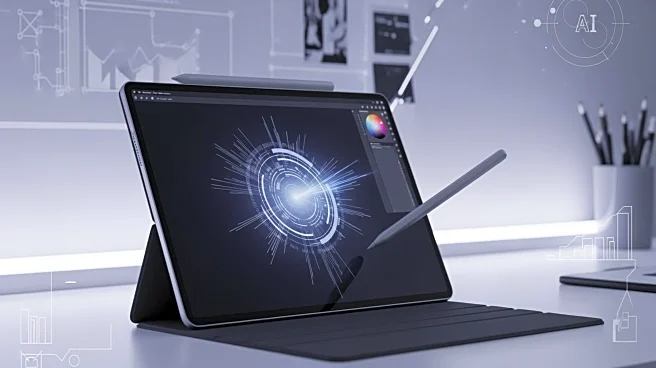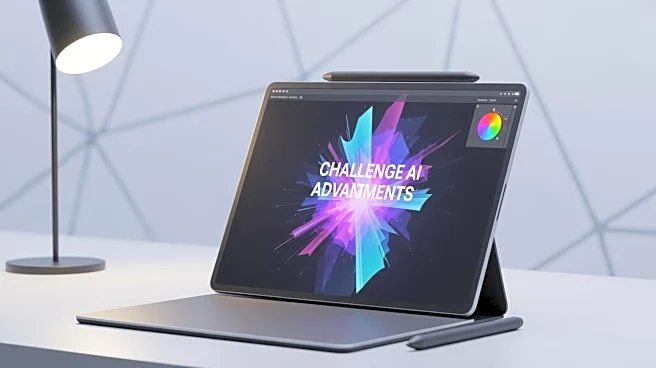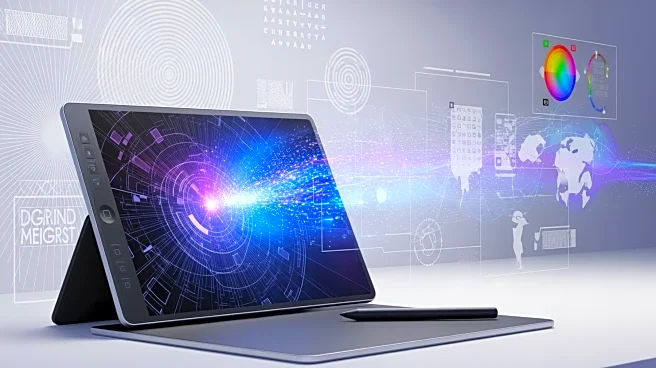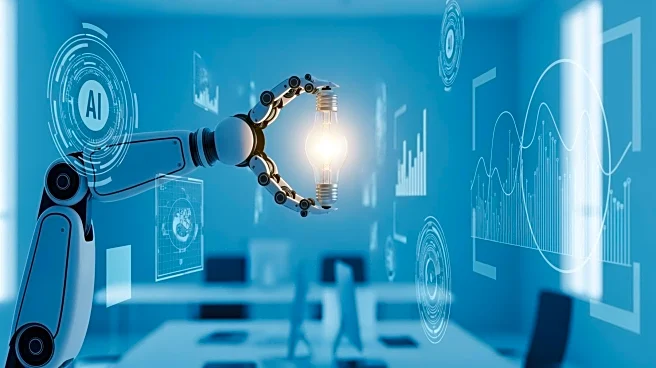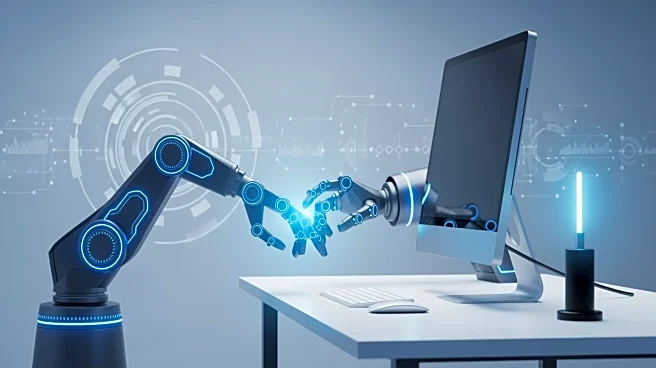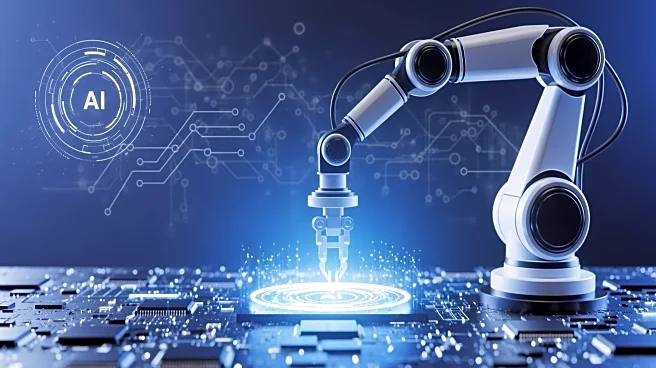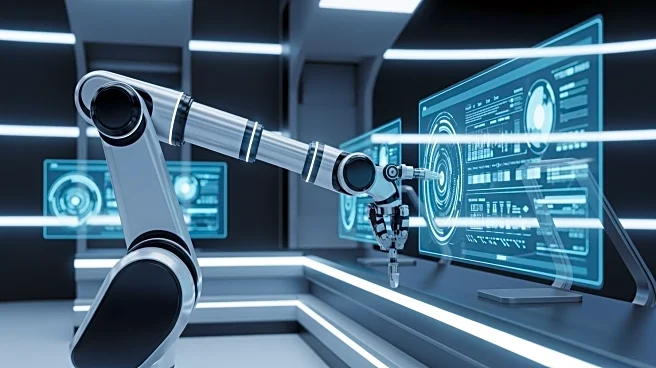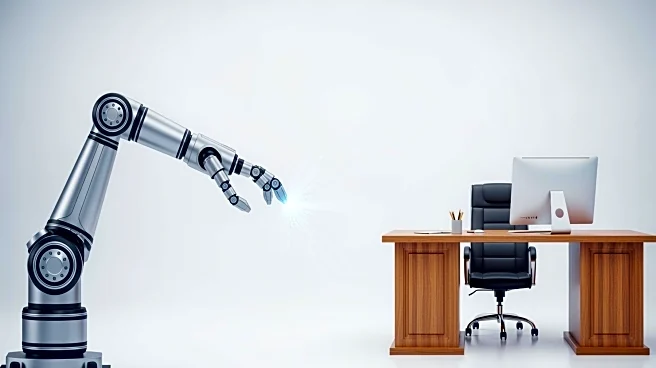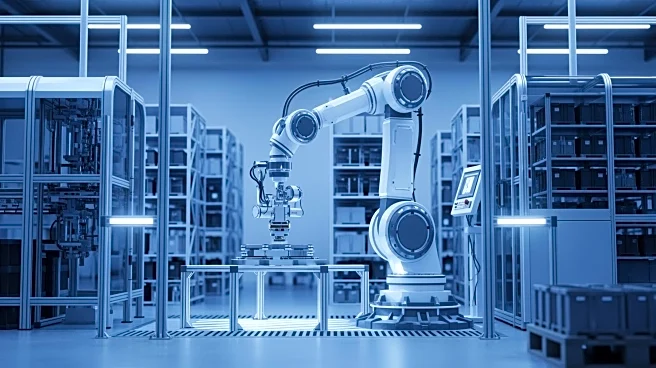What's Happening?
Graphic design graduates are increasingly finding themselves in competition with artificial intelligence (AI) for job opportunities. As AI technology becomes more prevalent in marketing campaigns, companies
are reducing the number of vacancies and raising expectations for faster work results. This trend is exemplified by companies like Klarna, which has introduced AI assistants to replace human roles, leading to significant job cuts. Graduates like Darby Hutchby and Ashleigh Sadler express concerns about the diminishing value of their degrees and the challenges in securing employment. Despite these challenges, some industry experts, like Dr. Rebecca Ross, believe that AI will not eliminate the graphic design industry but rather transform it, offering new opportunities for designers to adapt and innovate.
Why It's Important?
The rise of AI in the graphic design industry highlights a broader trend of technology reshaping job markets. This shift has significant implications for new graduates, who may find their skills undervalued or obsolete. The pressure to compete with AI could lead to increased stress and a need for continuous upskilling. Companies may benefit from cost savings and efficiency gains, but the quality of creative work could suffer if human input is undervalued. The situation underscores the need for educational institutions to better prepare students for a rapidly changing job landscape, where adaptability and a proactive mindset are crucial.
What's Next?
As AI continues to evolve, the graphic design industry may see further integration of technology in creative processes. Companies might increasingly seek graduates who can leverage AI tools effectively, while also valuing unique human creativity. This could lead to a dual focus in education and training, emphasizing both technical proficiency and creative thinking. The industry may also witness a pushback against AI dominance, with calls for ethical considerations and the preservation of human jobs. Stakeholders, including educational institutions and industry leaders, will need to collaborate to ensure a balanced approach that harnesses AI's potential without compromising human employment.
Beyond the Headlines
The ethical implications of AI replacing human jobs in creative fields are significant. There is a risk of homogenization in design, where AI-generated content lacks the personal touch and cultural nuances that human designers bring. This could lead to a loss of diversity in creative expression. Additionally, the reliance on AI raises questions about intellectual property and the ownership of AI-generated works. As the industry navigates these challenges, there may be a growing demand for policies that protect human creativity and ensure fair compensation for designers.
